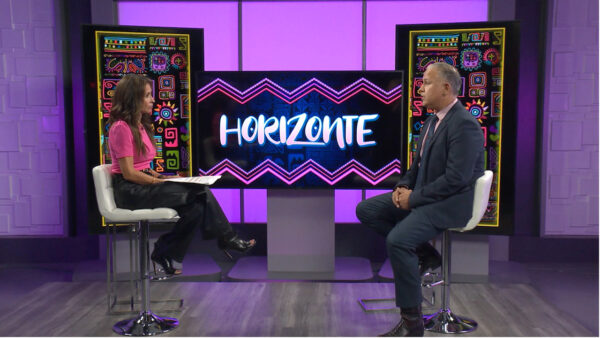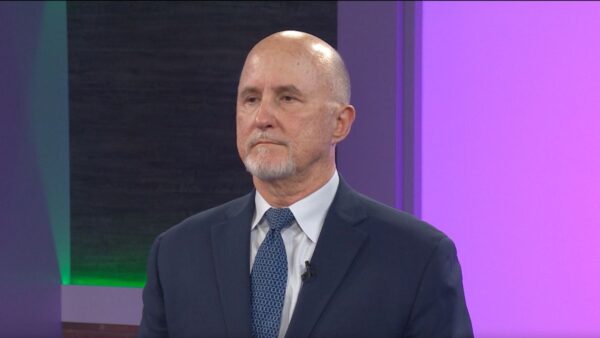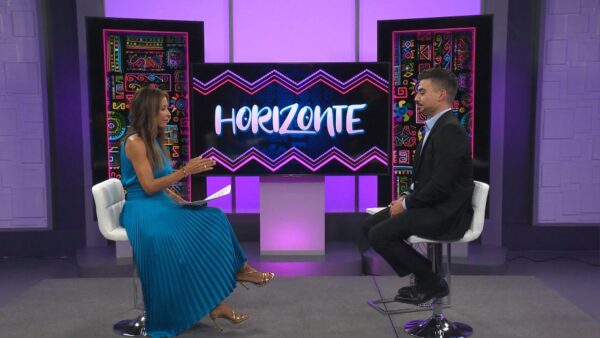Nine mayors, and a number of other elected officials, business leaders, and economic development staff from the Valley participated in a binational economic forum in Mexico. Litchfield Park Mayor Thomas Schoaf, Chair of the Maricopa Association of Governments Economic Development Committee; and Scottsdale Mayor Jim Lane, Chair of the Maricopa Association of Governments (MAG) Transportation Policy Committee talk about the forum which focused on border trade relations and economic development.
Josè Cà rdenas: Last month Arizona mayors business leaders and other elected officials participated in a binational economic forum in Mexico. We'll talk to two of the valley mayors who wept on the trip. Here's what a couple of other mayors said at the forum.
Marie Lopez Rogers: Also want to say that there are many cities and towns that understand, that rely, that the economic value between both of our countries. Thank you so much for the invitation. Thank you for welcoming us. I do appreciate the welcome home. Thank you.
Greg Stanton: What is our citizen's face of the future? What can we do with our time, effort and political capital to help the citizens of Arizona? We decided through MAG, we decided that building closer economic ties with Sonora, with Nogales and with Mexico as a whole is one of the best things we can do for representing the people of our community.
Josè Cà rdenas: Joining me to talk about the forum is Scottsdale mayor Jim lane. Transportation policy committee. Also here Litchfield Park Mayor Thomas Schoaf. Mayor Schoaf, why is this of importance to Arizona?
Thomas Schoaf: We found when we started looking into the economic development and economic activity in Arizona as one of the reactions that we had to the great depression that we just are coming out of we looked at it about three years ago and found that on average we have 65,000 visitors from Mexico each and every day. Legal visitors that are coming here for business and for leisure and for pleasure trips. We found that they were spending $7 million a day on average each day of the year. So over $2.7 billion coming into the economy in the state of Arizona. Quite frankly as mayors we didn't even know they existed. We didn't know the level of business activity was that high, so that led us down a path of looking for ways that we could improve the business climate here so that we can encourage more business to be done with our neighbor to the south.
Josè Cà rdenas: Mayor lane, as I understand it, one of the responses was the precursor to the most recent conference. You did basically the same in Phoenix.
Jim Lane: Exactly. Through MAG, our economic development committee, which is an integral part of this process through MAG, we had an invitation to those officials from Mexico to come here to the valley and visit with us. It was very well responded to and frankly it was a very positive event. It was more introductory as we try to reconnect I suppose this valley and maybe even the state with some of our partners in the past in the state of Sonora. It was a very good start and they reciprocated by the invitation too.
Josè Cà rdenas: How would you characterize the one we just went to?
Jim Lane: I would say just as Mayor Schoaf indicated I think you really have a situation where we have recognized historically there's been a great and close association -- I'll focus specifically on state of Sonora because that's our closest state in Mexico that we dealt with for many, many years. And ourselves. That there are a number of things that are happening with our economy both here in the United States and in Mexico. Mexico has had some significant improvements in their investment, availability of investment in their community. That has proven to be one of those areas even now in near shoring production comes back from the Far East, near shoring in Mexico becomes much more attractive. Obviously being that much closer to their markets or the markets that even the Far East has developed here in the United States and in North America, Mexico is a fantastic alternative for it. The labor capital available in Mexico is still on a very positive side but it's growing. I think it's now slated to be the 14th largest economy in the world. So that's going to make it certainly has been a very valued partner for Arizona and our major trading partner for Arizona.
Josè Cà rdenas: Mayor Schoaf, as I understand it, the participants that U.S. delegates went there, mayors from the valley here and from Tucson, one of the things the Mexicans tried to impress upon you was the level of sophistication of the industry south of the border.
Thomas Schoaf: That's true. The near shoring is being driven by the cost advantages of doing business in Mexico now as compared to some of the areas in the Far East. But it's supported by the fact that the work force in Mexico is tremendously sophisticated. They have a very strong education system in Mexico to train workers. They have systems so that when we bring in a new plant the local governments and local universities partner and produce literally a trained work force for employers when they open shop. So they were trying to get across to us as their visitor the level of sophistication that's available for those doing business in Mexico.
Josè Cà rdenas: As I understand one of the ways they did that was take you to a major operation by a German company in Nogales.
Thomas Schoaf: We visited continental A.G., an automotive supplier worldwide. They have a very significant plant in Nogales in building radios and electronic components used in Ford and I think Chrysler automobiles.
Josè Cà rdenas: Mayor Lane, the committee you head is transportation. How does that all factor into this?
Jim Lane: A lot of the focus has been on recently certainly working together with Pinal and Pima County in the Sun corridor, meant to be a developing area as far as an inland port in conjunction with the infrastructure, the union Pacific and sea of Cortez. Those are added attractions for this marketplace in North America because there's an awful lot of routing now going through Long Beach which is running at about 100% even with the economy as it is right now, so there is a need to provide some alternatives that are quicker and easier and frankly for routing into Arizona. To develop an inland port where we would have value add in Arizona, utilize the traffic that exists in our exports on the back whether it goes to the Far East or other parts of the world through those ports in Mexico as well. If I could say, one of the important aspects of this that probably goes beyond all else is the developing of a relationship with Mexico on an even sense of equality of our commerce in the trade back and forth. I don't mean to say we never run a trade deficit one way or the other but that we are basically working with one another for advantages that Mexico has and the advantages that the U.S. has in certain markets and the exchange. It's a positive environment growing very fast.
Josè Cà rdenas: Thank you both for joining us on Horizonte.
Thomas Schoaf:Litchfield Park Mayor, Chair of the Maricopa Association of Governments Economic Development Committee; Scottsdale Mayor Jim Lane:Chair, Maricopa Association of Governments (MAG) Transportation Policy Committee;




















